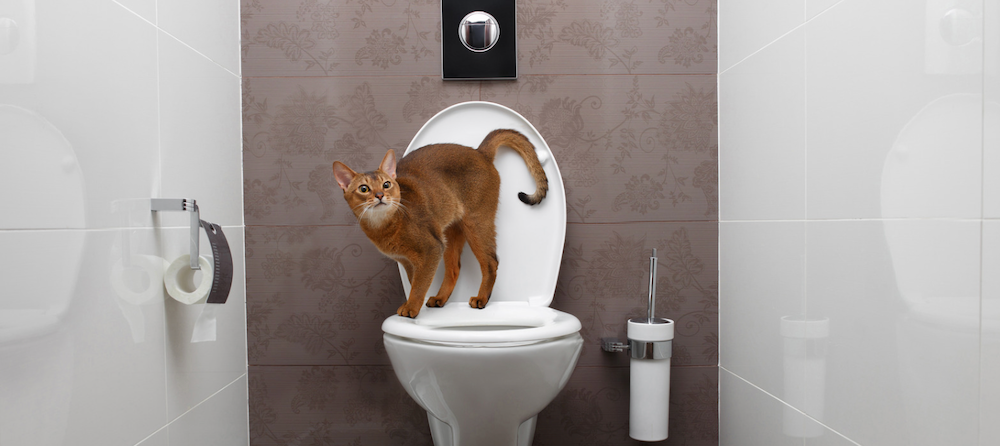The author is making a few good points on Can You Flush Cat Poo or Litter Down the Toilet? as a whole in this great article beneath.

Intro
As cat proprietors, it's important to be mindful of just how we get rid of our feline buddies' waste. While it might seem hassle-free to flush feline poop down the commode, this method can have destructive consequences for both the setting and human health.
Alternatives to Flushing
Luckily, there are more secure and more accountable means to dispose of feline poop. Think about the adhering to alternatives:
1. Scoop and Dispose in Trash
The most common technique of taking care of pet cat poop is to scoop it into a biodegradable bag and throw it in the trash. Be sure to use a devoted litter scoop and deal with the waste quickly.
2. Use Biodegradable Litter
Opt for biodegradable pet cat clutter made from products such as corn or wheat. These trashes are environmentally friendly and can be securely taken care of in the garbage.
3. Bury in the Yard
If you have a yard, take into consideration hiding cat waste in a marked location away from veggie gardens and water resources. Make sure to dig deep enough to stop contamination of groundwater.
4. Install a Pet Waste Disposal System
Purchase a pet dog garbage disposal system particularly designed for pet cat waste. These systems use enzymes to break down the waste, lowering smell and ecological effect.
Health Risks
Along with ecological concerns, purging pet cat waste can likewise posture health dangers to human beings. Feline feces might contain Toxoplasma gondii, a parasite that can trigger toxoplasmosis-- a possibly severe disease, specifically for expectant women and individuals with weakened body immune systems.
Ecological Impact
Purging pet cat poop introduces damaging microorganisms and bloodsuckers right into the water, posturing a substantial danger to water environments. These pollutants can negatively impact marine life and concession water high quality.
Final thought
Responsible pet possession prolongs beyond providing food and sanctuary-- it likewise involves correct waste administration. By refraining from purging feline poop down the toilet and going with alternate disposal approaches, we can lessen our environmental impact and protect human wellness.
Why Can’t I Flush Cat Poop?
It Spreads a Parasite
Cats are frequently infected with a parasite called toxoplasma gondii. The parasite causes an infection called toxoplasmosis. It is usually harmless to cats. The parasite only uses cat poop as a host for its eggs. Otherwise, the cat’s immune system usually keeps the infection at low enough levels to maintain its own health. But it does not stop the develop of eggs. These eggs are tiny and surprisingly tough. They may survive for a year before they begin to grow. But that’s the problem.
Our wastewater system is not designed to deal with toxoplasmosis eggs. Instead, most eggs will flush from your toilet into sewers and wastewater management plants. After the sewage is treated for many other harmful things in it, it is typically released into local rivers, lakes, or oceans. Here, the toxoplasmosis eggs can find new hosts, including starfish, crabs, otters, and many other wildlife. For many, this is a significant risk to their health. Toxoplasmosis can also end up infecting water sources that are important for agriculture, which means our deer, pigs, and sheep can get infected too.
Is There Risk to Humans?
There can be a risk to human life from flushing cat poop down the toilet. If you do so, the parasites from your cat’s poop can end up in shellfish, game animals, or livestock. If this meat is then served raw or undercooked, the people who eat it can get sick.
In fact, according to the CDC, 40 million people in the United States are infected with toxoplasma gondii. They get it from exposure to infected seafood, or from some kind of cat poop contamination, like drinking from a stream that is contaminated or touching anything that has come into contact with cat poop. That includes just cleaning a cat litter box.
Most people who get infected with these parasites will not develop any symptoms. However, for pregnant women or for those with compromised immune systems, the parasite can cause severe health problems.
How to Handle Cat Poop
The best way to handle cat poop is actually to clean the box more often. The eggs that the parasite sheds will not become active until one to five days after the cat poops. That means that if you clean daily, you’re much less likely to come into direct contact with infectious eggs.
That said, always dispose of cat poop in the garbage and not down the toilet. Wash your hands before and after you clean the litter box, and bring the bag of poop right outside to your garbage bins.
https://trenchlesssolutionsusa.com/why-cant-i-flush-cat-poop/

We were shown that report on Don’t flush cat feces down the toilet through an associate on our other website. I beg you set aside a second to promote this blog entry if you appreciated it. Thank you so much for going through it.
Apply Now
Comments on “Prevent Bathroom Emergencies: Don't Flush Cat Poop Down Your Toilet - Expert Guidance”